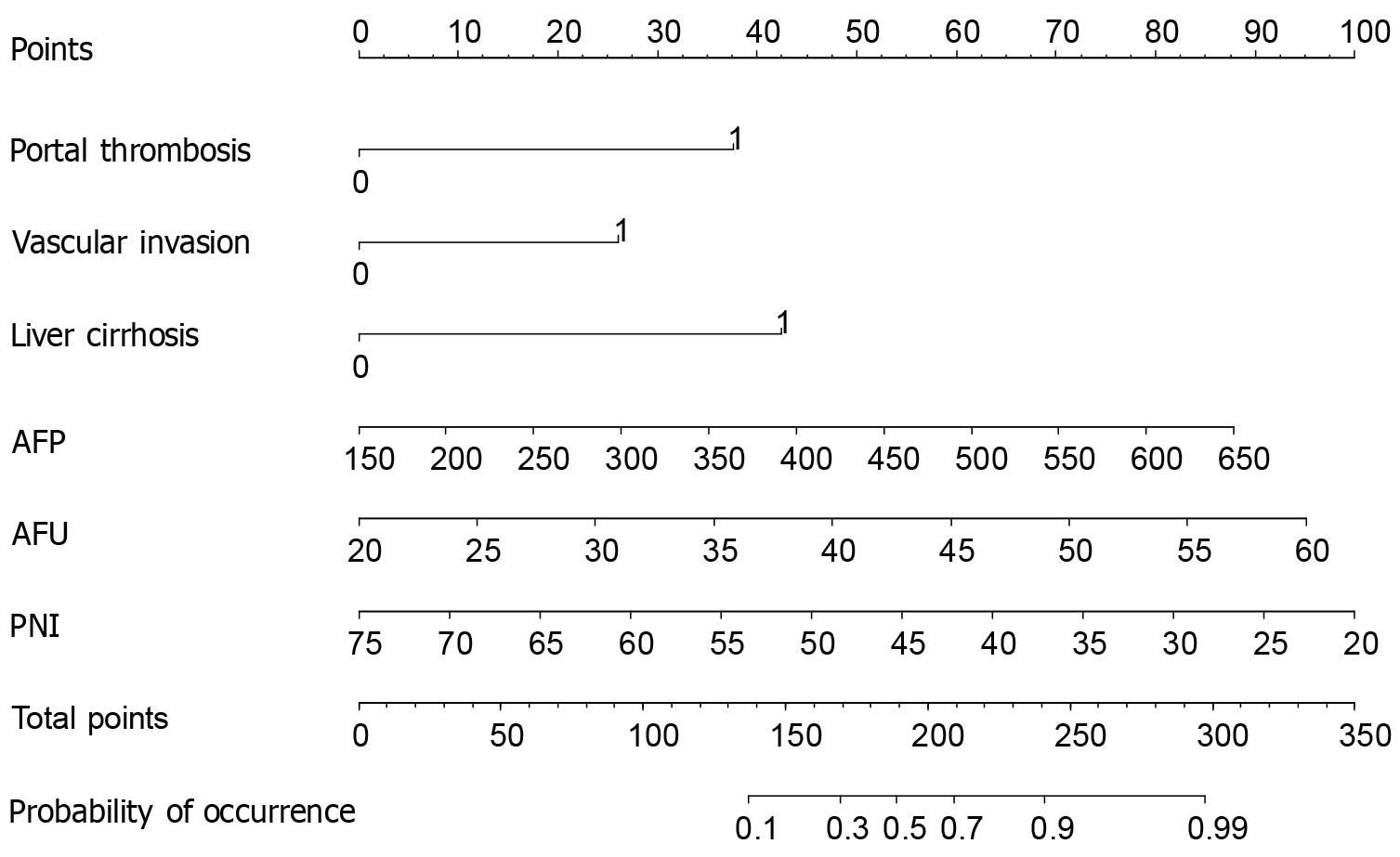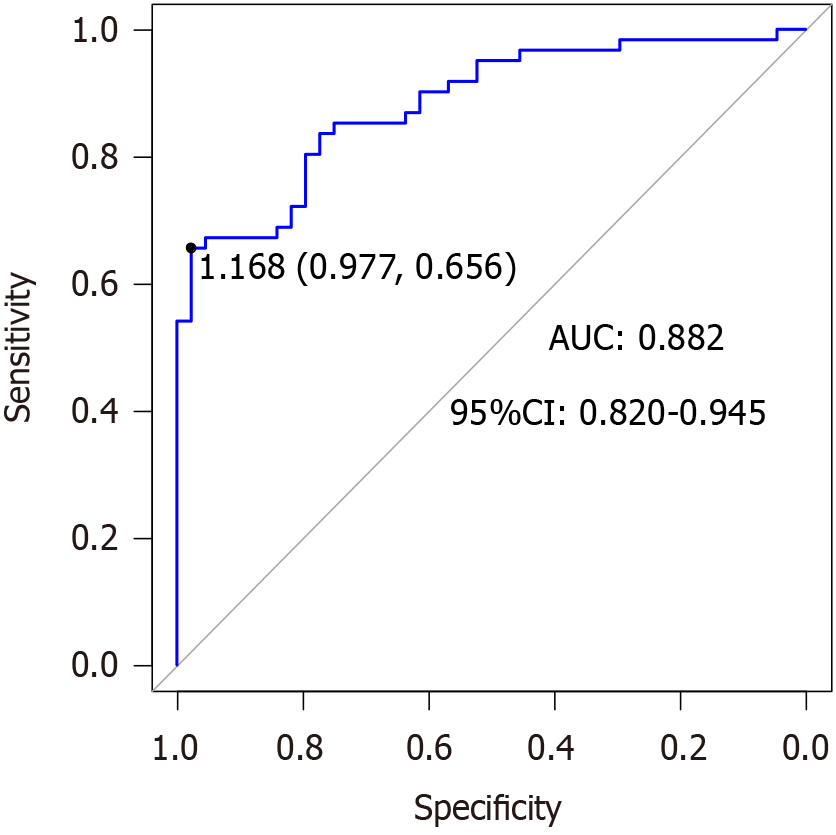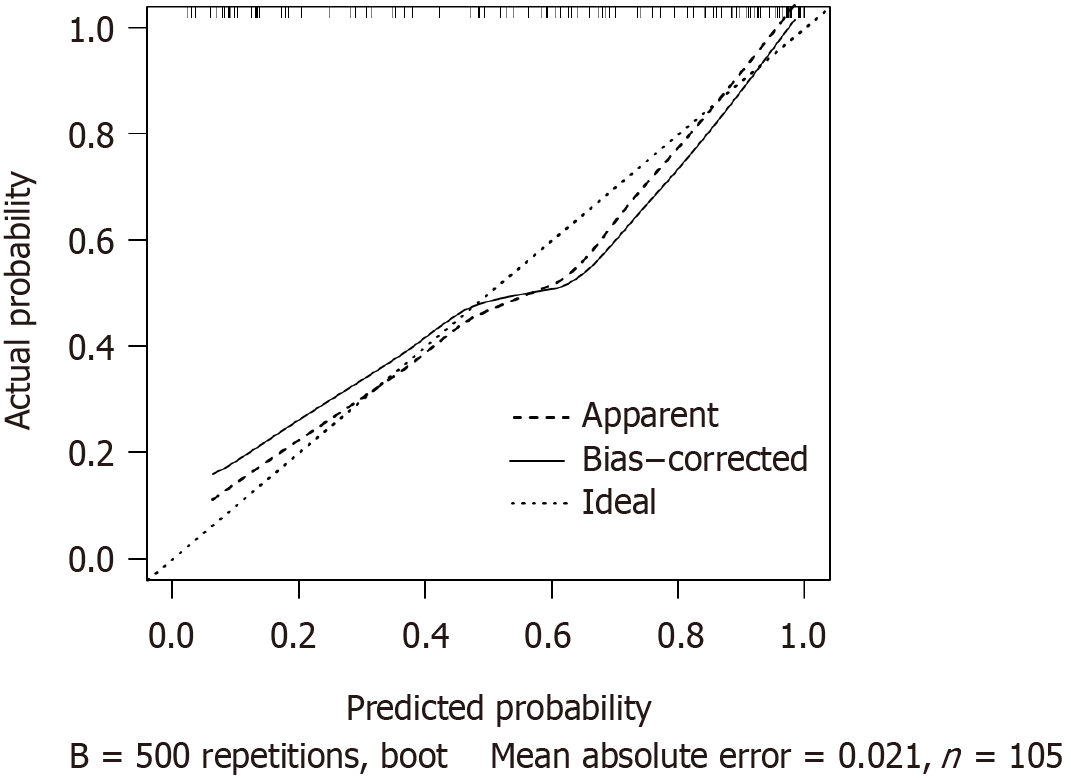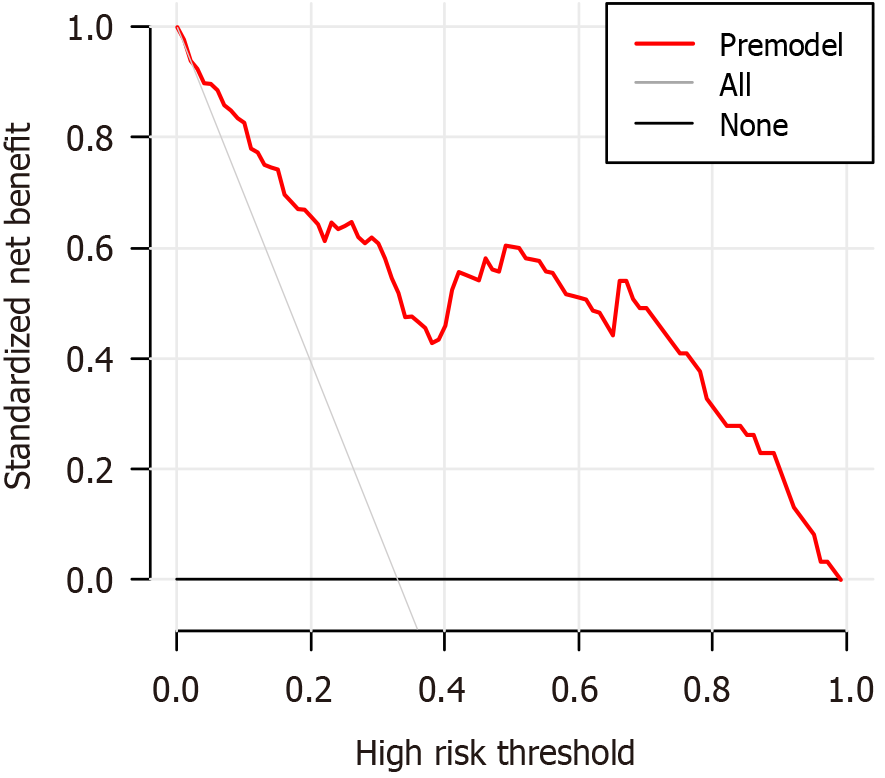Copyright
©The Author(s) 2024.
World J Gastrointest Surg. Aug 27, 2024; 16(8): 2630-2639
Published online Aug 27, 2024. doi: 10.4240/wjgs.v16.i8.2630
Published online Aug 27, 2024. doi: 10.4240/wjgs.v16.i8.2630
Figure 1 Nomogram prediction model for the prognosis of patients with hepatocellular carcinoma treated with radiofrequency ablation and transcatheter arterial chemoembolization.
HCC: Hepatocellular carcinoma; RFA: Radiofrequency ablation; AFP: Alpha-fetoprotein; AFU: α-L-fucosidase; PNI: Prognostic nutritional index.
Figure 2 Receiver operation characteristics curve of the prognosis (recurrent-metastasis) of patients with hepatocellular carcinoma receiving radiofrequency ablation plus transcatheter arterial chemoembolization.
AUC: Area under the curve; 95%CI: 95% confidence interval.
Figure 3 Calibration curve of the model.
The calibration of the model confirming the agreement between predicted and observed outcomes of post-treatment recurrent metastasis. The real post-treatment recurrent metastasis rate is represented on the Y-axis. The X-axis represents the expected risk of post-treatment recurrent metastasis. The closer the bias-corrected curve is to the ideal curve, the better the prediction effect.
Figure 4 Analysis of the decision curve for the predictive model.
The net benefit was produced against the high-risk threshold. The solid red line represents the prediction model. The decision curve shows that when the threshold probability is < 85%, the implementation of this predictive model would add a net benefit compared with either the treat-all or the treat-none strategies.
- Citation: Shen HH, Hong YR, Xu W, Chen L, Chen JM, Yang ZG, Chen CH. Nomogram predicting the prognosis of primary liver cancer after radiofrequency ablation combined with transcatheter arterial chemoembolization. World J Gastrointest Surg 2024; 16(8): 2630-2639
- URL: https://www.wjgnet.com/1948-9366/full/v16/i8/2630.htm
- DOI: https://dx.doi.org/10.4240/wjgs.v16.i8.2630
















